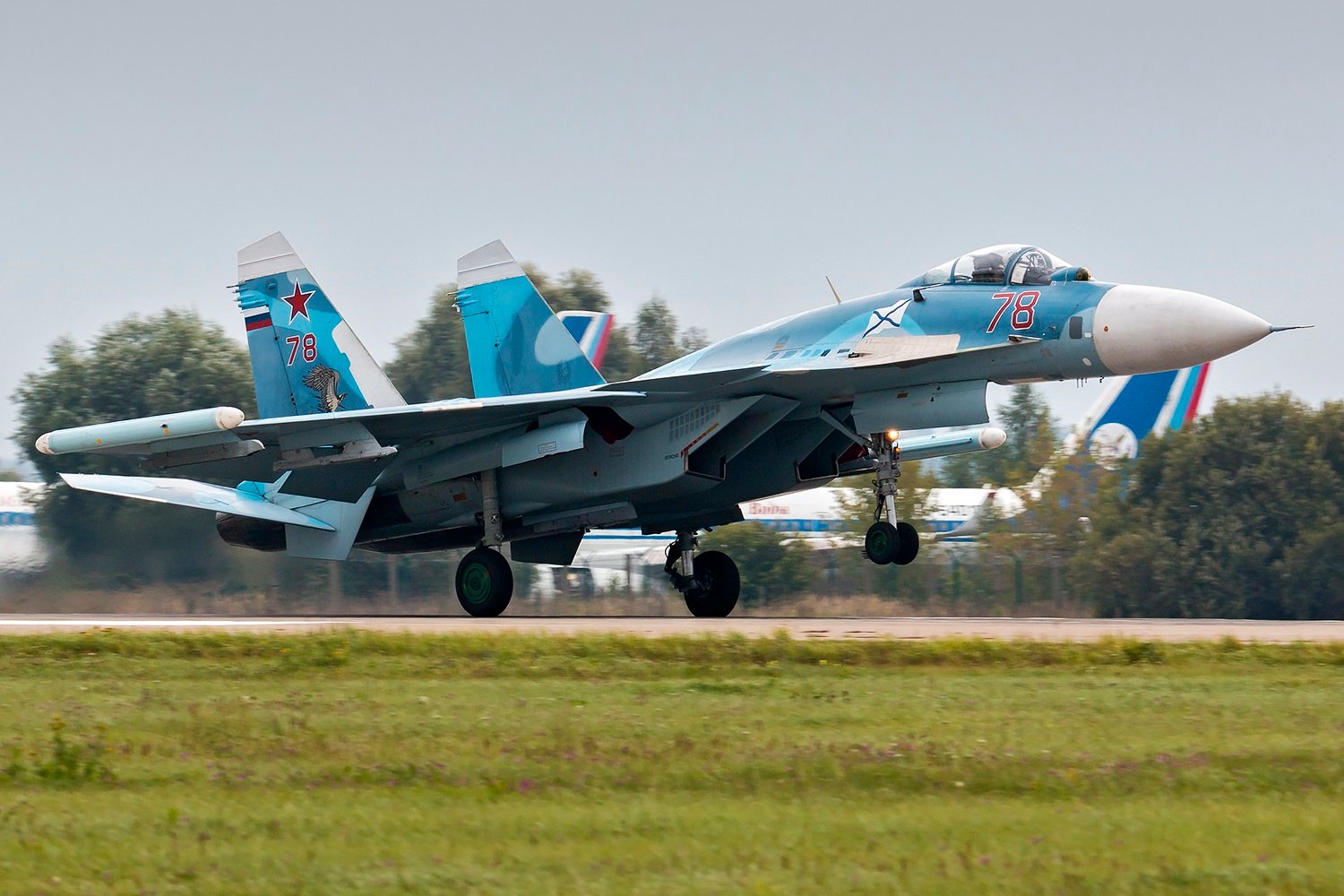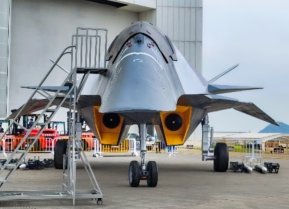Russia's Su-33 Fighter Has 1 Problem Explained in 3 Words
The Sukhoi Su-33, NATO reporting name Flanker D, is a single-seat, multi-role fighter designed as a naval interceptor for Russia’s aircraft carriers. Based on the Su-27, the Su-33 boasts impressive speed (Mach 2), altitude (55,000+ feet), and range (~2,000 miles).
No Aircraft Carrier: The Sukhoi Su-33, NATO reporting name Flanker D, is a single-seat, multi-role fighter designed as a naval interceptor for Russia’s aircraft carriers. Based on the Su-27, the Su-33 boasts impressive speed (Mach 2), altitude (55,000+ feet), and range (~2,000 miles).

-Its 12 hardpoints support air-to-air missiles, anti-ship missiles, bombs, and a 30mm cannon. However, the Su-33 faces a critical issue: Russia’s only carrier, Admiral Kuznetsov, has been in repair for many years, leaving the Su-33 without a proper platform for carrier-based operations. This limitation undermines the Su-33’s intended role as a carrier-capable fighter.
Sukhoi Su-33: Russia’s Carrier Fighter Without a Carrier
The Sukhoi Su-33, a single-seat, multi-role fighter jet, was designed as a naval interceptor for the Russian Navy's aircraft carriers. Agile and fast, the Su-33 is powered by two Saturn AL-31K engines, enabling it to reach speeds around Mach 2 and operate at altitudes over 55,000 feet.
With 12 external hardpoints, it can carry a range of air-to-air and anti-ship missiles, bombs, and a 30mm cannon.
However, the Su-33 faces a significant issue: Russia's only carrier, the Admiral Kuznetsov, has been out of action for repairs, leaving the Su-33 without a proper platform to operate from.
The Russian Aerospace Forces fields a credible fleet of combat aircraft. While the war in Ukraine has exposed the weaknesses of Russian air power and the flawed training of Russian pilots, those pilots and the airframes that carry them are certainly capable.

Of the several types of fighter jet the Russian Aerospace Forces fly, the Sukhoi Su-33 stands out.
The Sukhoi Su-33: Agile and Fast
A single-seat, multi-role fighter jet, the Su-33, NATO reporting name Flanker D, was designed as a naval interceptor for carrier operations.
The Su-33 is agile and fast. Its two Saturn AL-31K engines can produce a combined 60,000 lbs of thrust that yield a maximum speed around Mach 2 (1,500 miles per hour). The aircraft can operate at altitudes over 55,000 feet and has an outstanding operational range of close 2,000 miles. (The combat radius, or its actual fighting range, would be smaller.) As a naval interceptor, the fighter jet can also refuel midair, boosting its operational range.
The Su-33 Flanker D was based on the Su-27 Flanker, with structural changes that make it suited for carrier operations. As such, the Su-33 Flanker D has a stronger airframe and undercarriage, folding wings, stabilators, canards, and larger wings for increased lift.
But where the Su-33 Flanker D shines is in its weapon capabilities.
With 12 external hardpoints, the fighter jet can carry up to 14,000 lbs of munitions, including R-73 heat-seeking air-to-air missiles and R-27 radar-homing air-to-air missiles, as well as cruise missiles, glide bombs, rockets, and conventional bombs.
As a naval interceptor, the fighter can carry a wide variety of anti-ship missiles, such as AS-17 Krypton and Moskit ASM-MSS munitions.
When the action gets up-close and personal, the Su-33 Flanker can prevail with 150 rounds fired from its powerful 30mm Gryazev-Shipunov GSh-30-1 cannon.
The Su-33 inspired the Chinese military to build its Shenyang J-15 fighter jet, which shares capabilities with the Russian-made Flanker D.
The Su-33 Has One Problem that Can't Be Solved
The Su-33 was initially conceived as a naval fighter jet for the Soviet Union’s fleet of aircraft carriers. But Moscow never built a powerful carrier fleet, and planning for the Su-33 pivoted toward an aircraft that could also conduct operations from air bases on land.
Right now, the Russian Navy sports only one carrier, the Admiral Kuznetsov. Even that vessel is actually a mix of an aircraft carrier and guided-missile cruiser. It can carry up to twenty-four Su-33 and MiG-29K fighter jets, but the Admiral Kuznetsov is a troubled warship. It has been undergoing repairs for the past seven years, and it is not certain whether the ship will sail again operationally.
The Su-33 Flanker D is thus a carrier-based fighter without an aircraft carrier.
About the Author
Stavros Atlamazoglou is a seasoned defense and national security journalist specializing in special operations. A Hellenic Army veteran (national service with the 575th Marine Battalion and Army HQ), he holds a BA from the Johns Hopkins University, an MA from the Johns Hopkins’ School of Advanced International Studies (SAIS), and is pursuing a J.D. at Boston College Law School. His work has been featured in Business Insider, Sandboxx, and SOFREP.
All images are Creative Commons and/or Shutterstock.


